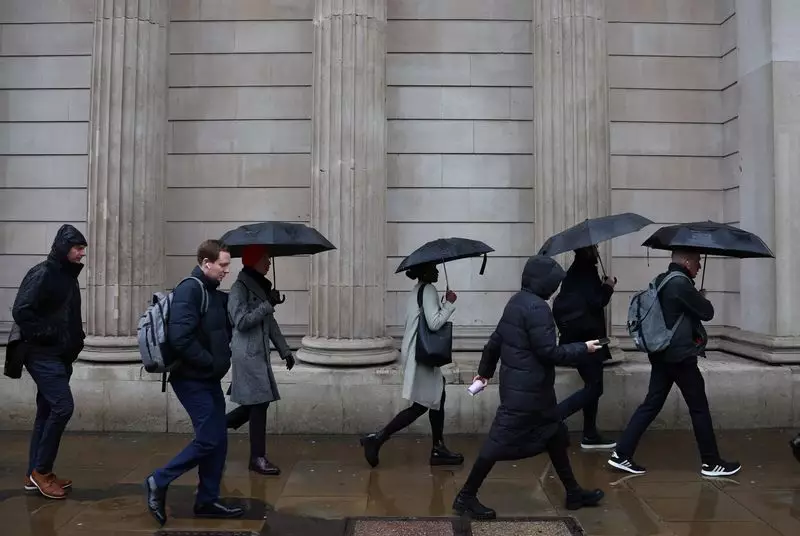The UK labor market has shown signs of significant cooling as revealed by recent data from the Recruitment and Employment Confederation (REC) and KPMG. As of October, wage growth has reached its lowest point since early 2021, indicating a shift in economic conditions that could have far-reaching implications for both workers and businesses. The index measuring starting salaries for permanent positions dipped to 52.5, a slight decline from September’s 52.8. This subdued growth raises concerns about the overall economic climate, especially as inflation continues to play a crucial role in future financial planning.
Accompanying the slowdown in wages is a noticeable decrease in hiring activity. The REC’s permanent placements index fell to 44.1 in October, reflecting an accelerated contraction in hiring not seen since March. Companies appear hesitant to make new hires, a tactic driven by the uncertainty surrounding the recent Labour government budget. This reluctance underscores a broader trend where businesses are adopting a cautious approach to staffing amidst fluctuating economic conditions that may signal a recession.
A critical factor influencing these trends is the recent budget announcement made by Finance Minister Rachel Reeves. The introduction of tax increases, estimated to raise £40 billion, primarily through elevated social security contributions and increased minimum wage mandates, could discourage companies from expanding their workforce. Jon Holt, CEO of KPMG, argues that the strain of absorbing additional costs from these tax adjustments may lead to a further slowdown in hiring. Such fiscal measures can place a heavy burden on businesses already grappling with the implications of a shifting economic landscape.
As the Bank of England (BoE) monitors wage growth for signs of persisting inflationary pressures, the reduction in borrowing costs to 4.75% could provide some relief. Neil Carberry, REC’s chief executive, indicates that the pay data does not suggest a definitive need for the BoE to discontinue its trajectory of gradual interest rate cuts. This approach may serve to bolster business confidence, providing a counterbalance to the challenges presented by rising taxes and a cooling labor market.
A notable development in the labor market is the continued rise in the availability of candidates for employment. For the 20th consecutive month, firms reported an increase in the supply of potential employees, culminating in the steepest growth rate of temporary staff availability in nearly four years. This trend could reflect a labor market adjustment as companies become more discerning in their hiring practices, favoring flexibility over long-term commitments amidst economic uncertainties. Given that vacancies have fallen for the twelfth month in a row, it is evident that businesses are reassessing their long-term staffing strategies in light of prevailing economic pressures.
The current state of the UK labor market indicates a cautious period ahead. With evident signs of stagnation in wage growth coupled with significant tax increases, employers may choose to tread lightly regarding hiring decisions. As businesses grapple with mounting costs and economic uncertainties, there may be further shifts in hiring practices, potentially leading to a more pronounced cooling of the labor market. How stakeholders adapt to these changes in the coming months will determine the resilience of the UK labor economy in the face of evolving challenges.

